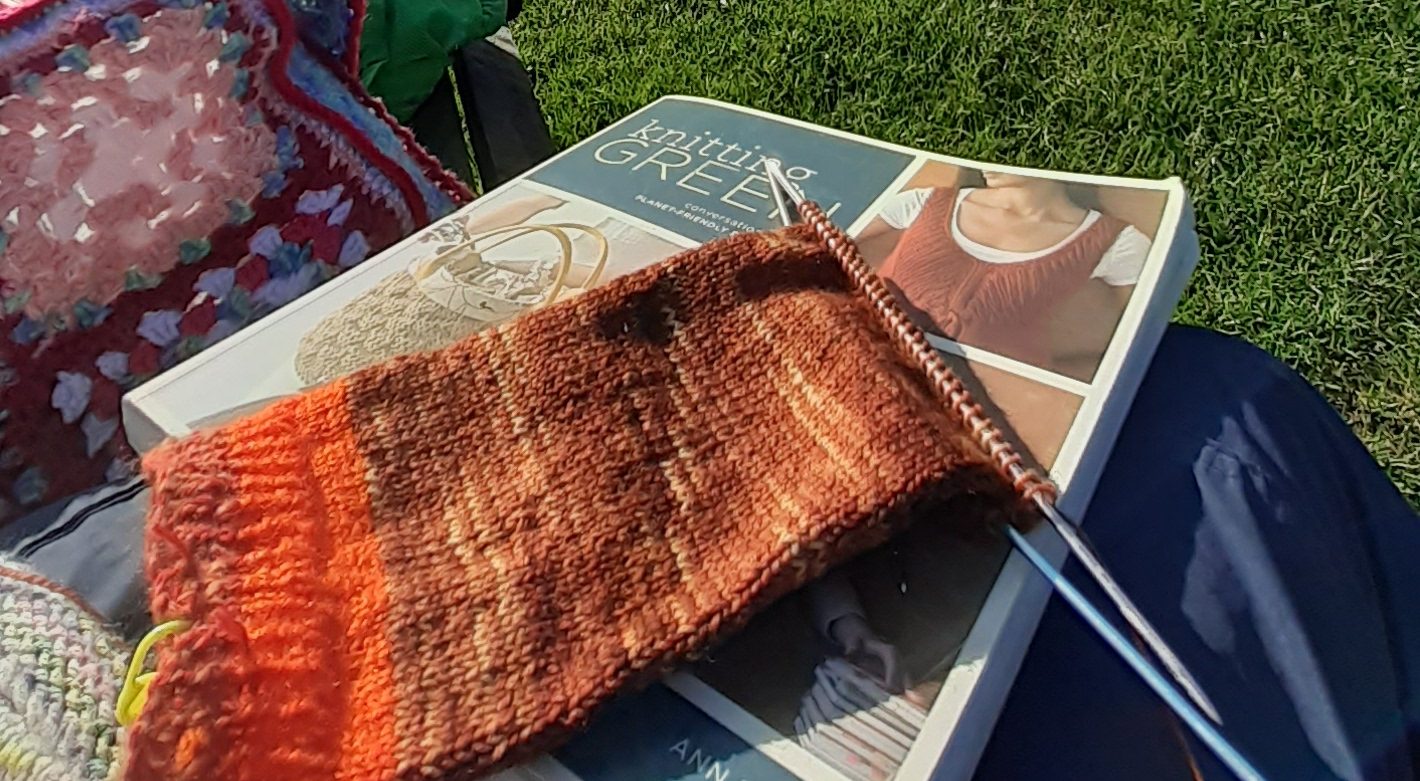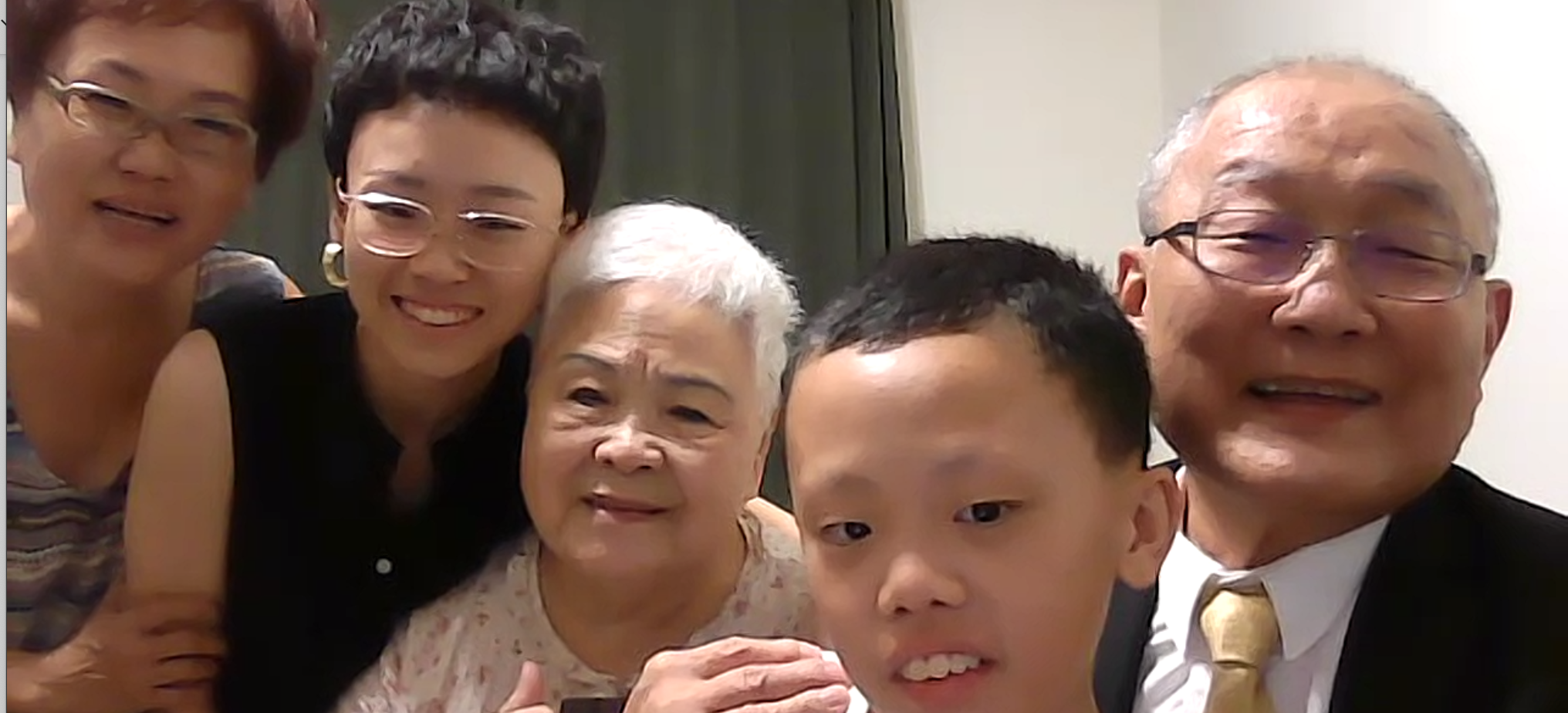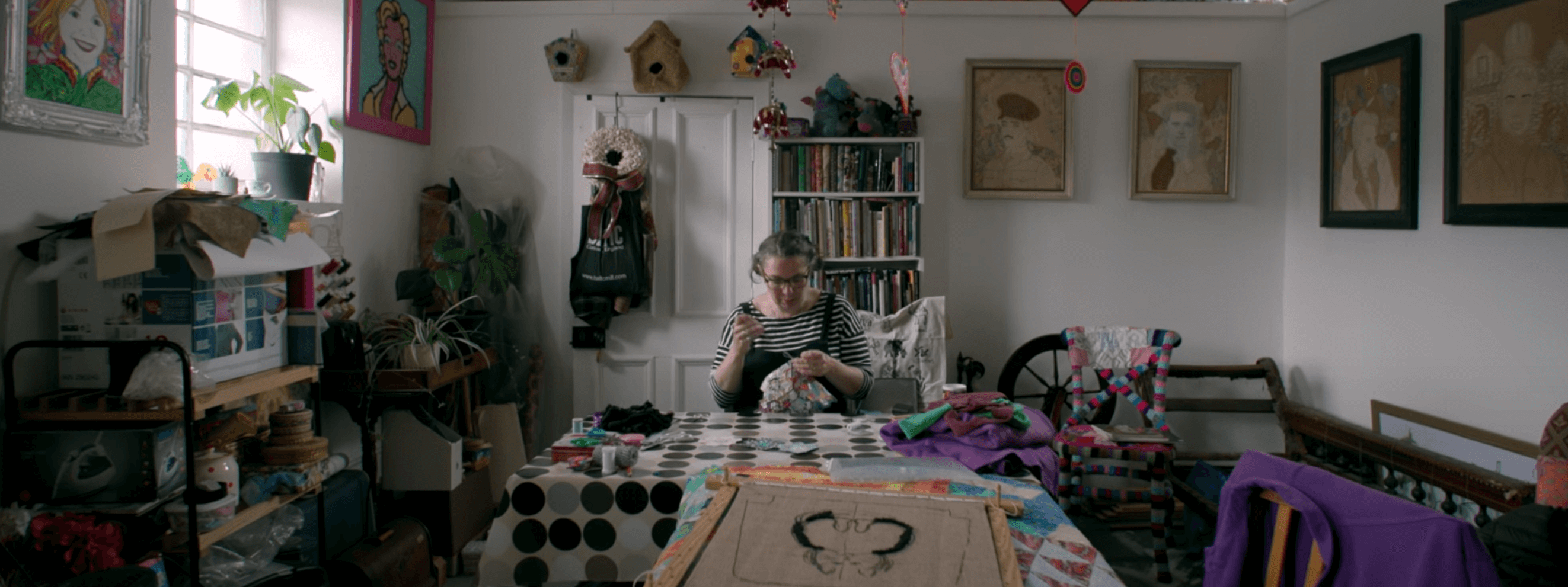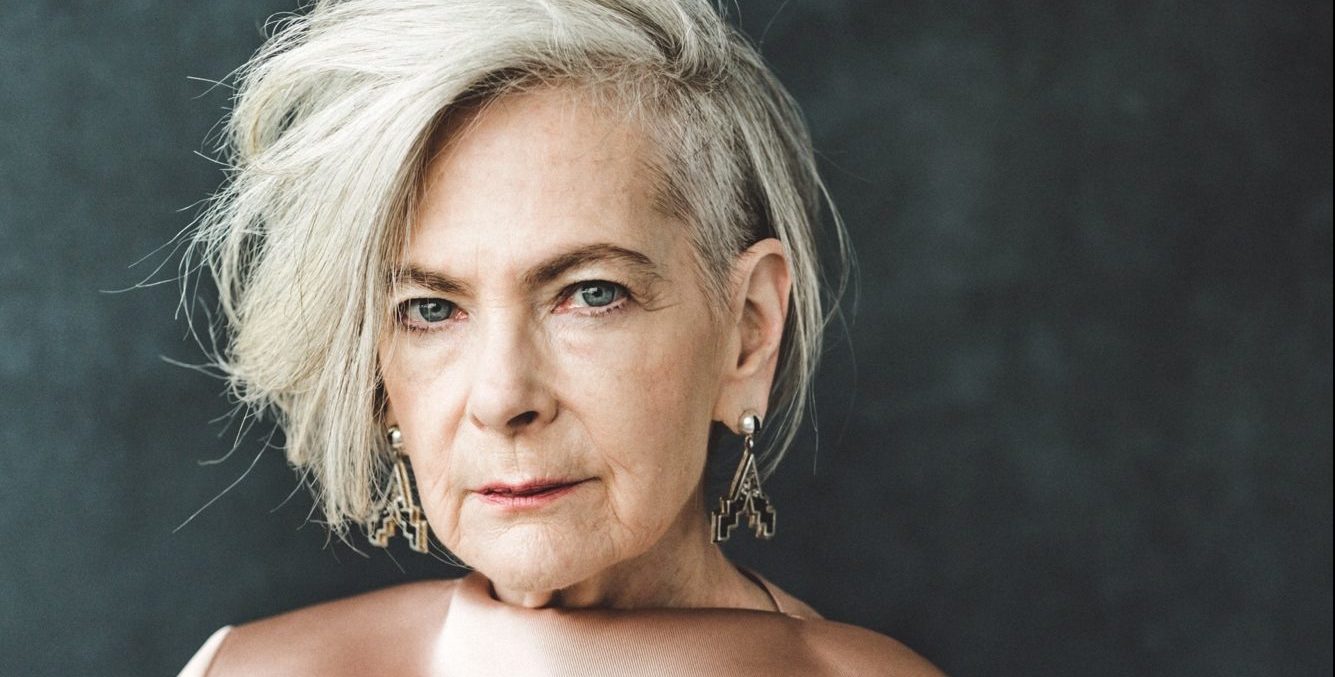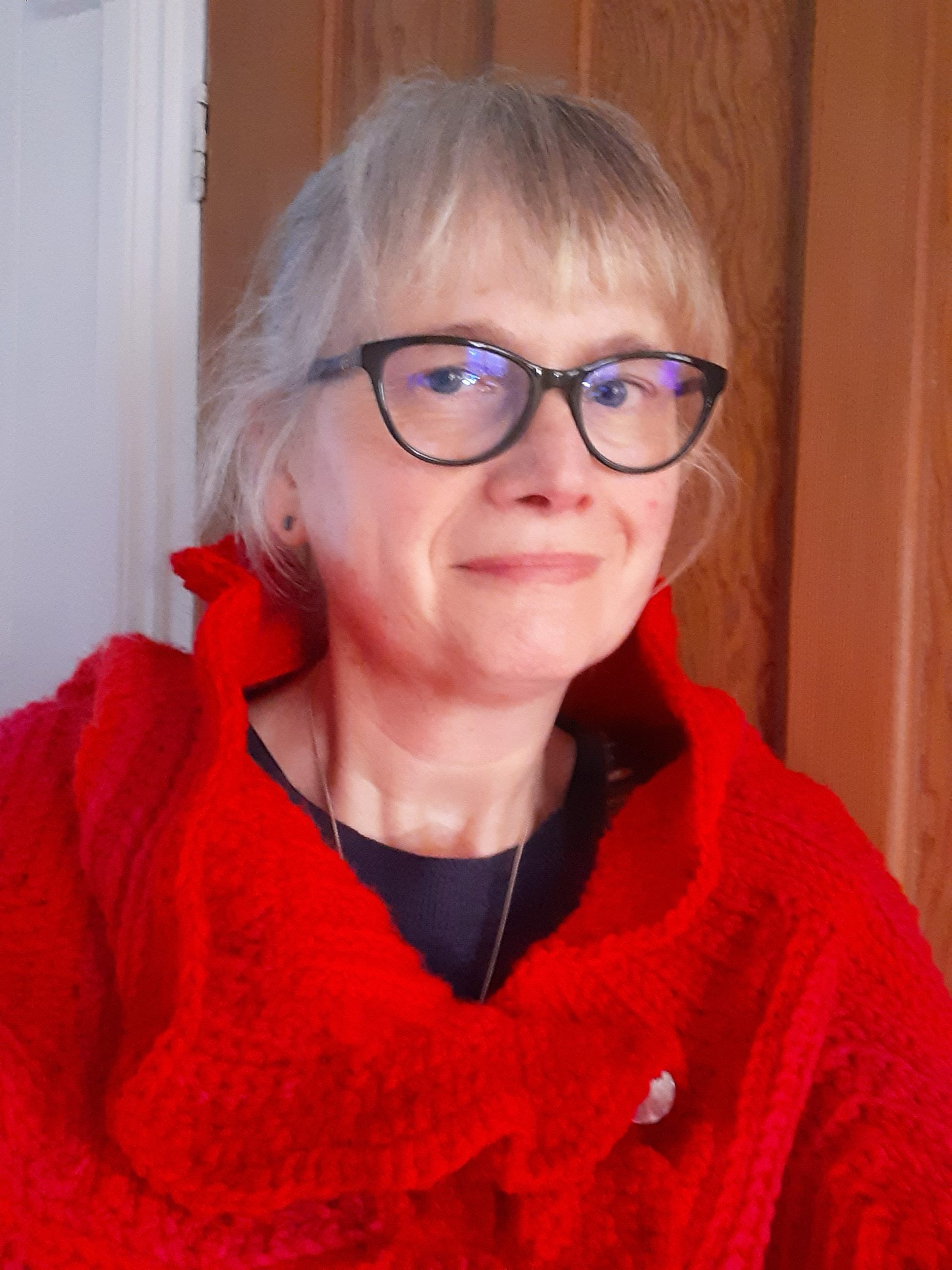
Isobel wearing a red crocheted cape which as she says started as a square and almost became a skirt
Reigniting a Childhood Passion
“I started crocheting and knitting when I was young. My mum taught me both. When I was 15, I hurt my back at school and was laid up at home for months, so I started properly doing it then. It was related to my health, as you’ll see when I tell you how I restarted. I wasn’t mobile and wanted to do something. I made lots of things, including this blanket,” she shows me. “I had no pattern and just kept going. When I bought my first house, a friend said putting it on my bed was a ‘passion killer’ (she laughs).”
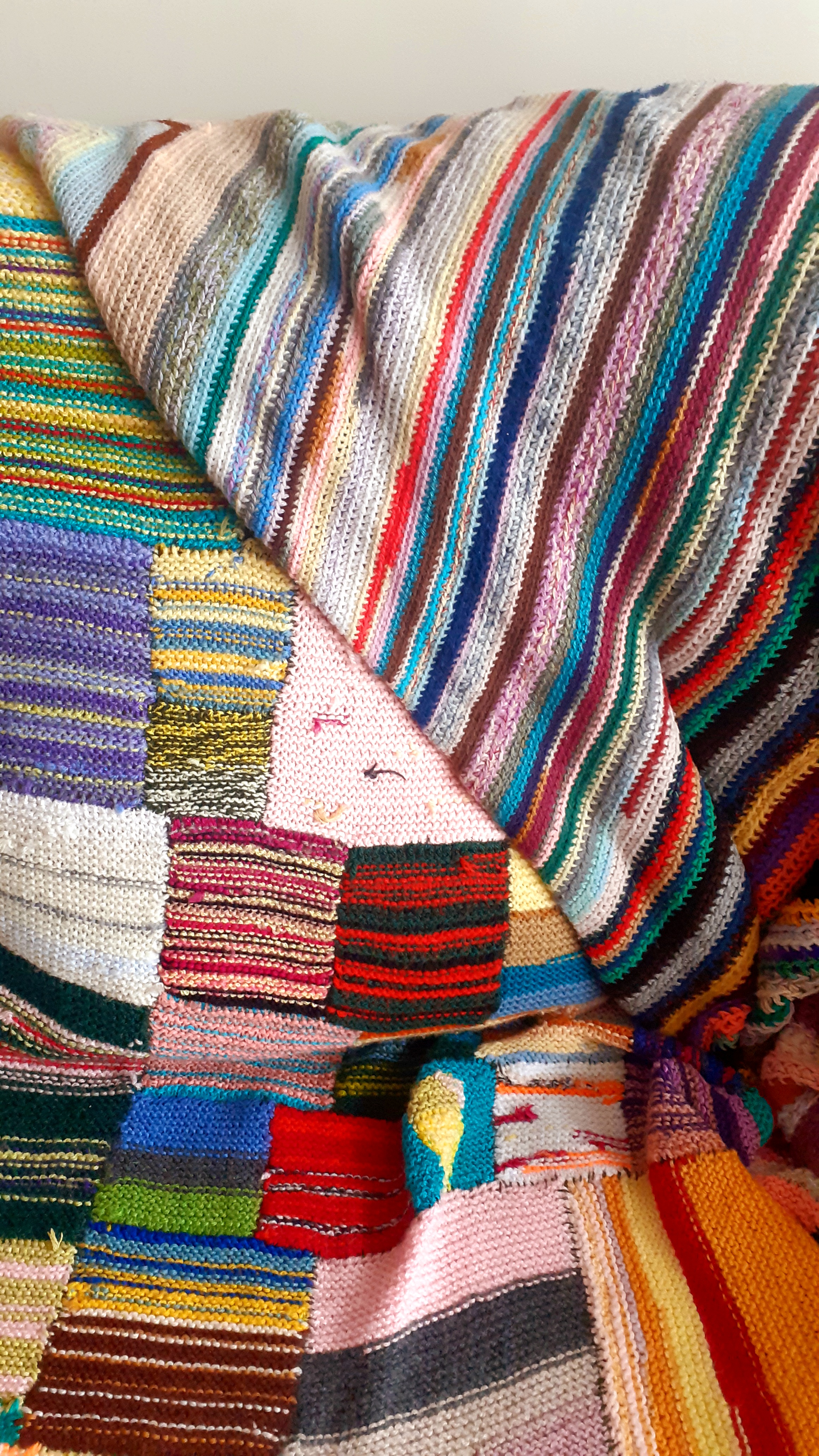
The knitted blanket that Isobel made when she was 15
Why Did You Stop and What Inspired You to Start Again?
“I completely stopped when life took over, and I was working full-time. No chance for hobbies. But during the lockdown, 40 years later, I thought I’d fancy having a go. I just got some wool, picked up the needles, and could still do it. Bloody hell, I thought! The muscle memory was incredible. I started knitting squares for a blanket, rationing myself to 2 or 3 rows a day. I then got Long Covid and couldn’t do any crafting at my worst. But when I could, even a little bit of crocheting brought joy. It was about the process, not the end product.”
"Crafting seemed to be a measure of how my health was affected....It gave me insights and some sense into how my condition was affecting me."
Crafting Through Health Challenges
“When I had Long Covid, I created grab-and-go bags with a crochet hook and some wool, so if I was well enough to go somewhere, my husband could go for a walk and I would sit and crochet. Ideally somewhere with a cup of tea and a toilet,” she laughs. “Crafting seemed to be a measure of how my health was affected. I developed the ‘Capacity and Knitting Energy Scale’ (CAKES) to understand my energy and fatigue and how it related to what I could do. It gave me insights and some sense into how my condition was affecting me.”
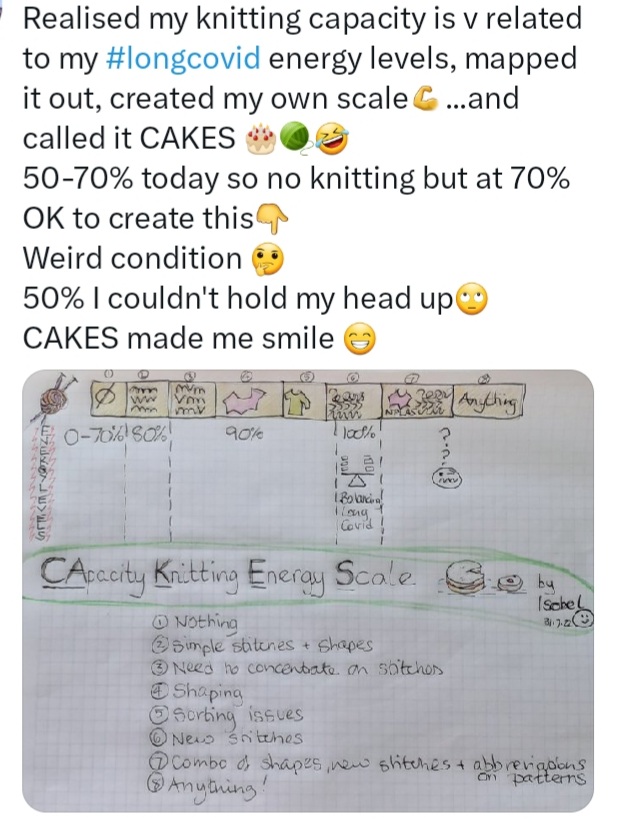
Isobel's CAKE scale
A Journey of Memories and Healing
“I’ve ended up with a lot of other people’s crafting stuff, like my mum’s and sister’s. I have a patchwork quilt I made at 16 with fabrics from my sister’s dungarees. At the time, they were just available fabrics, but now they’re full of memories. It’s interesting reflecting on things from the past while being present with them. The memories can be very powerful.”
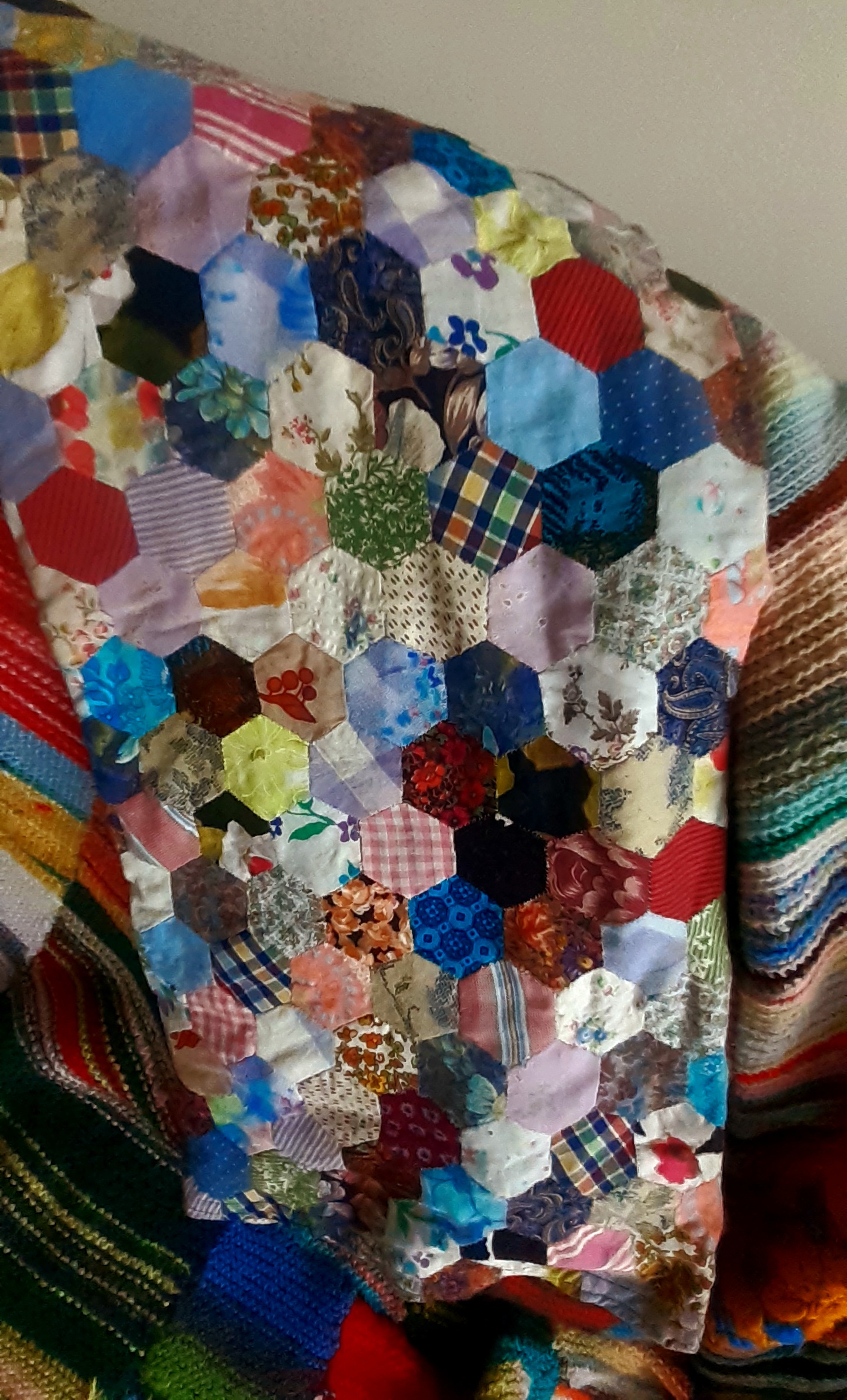
The patchwork quilt that Isobel made when she was 16
In What Way Is the Hobby the Same as When You Were Younger?
“What I think is interesting is that the things I made when I was younger, I didn’t follow patterns. I learnt the basic skill and then I just did it. I am kind of still like this. I do have some knitting patterns. In my work, I was very methodical, known as the doer and the finisher, but with crafting, I am the opposite. I don’t follow the rules, I don’t want to be obligated. I think this has been a theme throughout my life.”
How Does Having Fun and Enjoying Activities Impact Our Overall Well-being?
“Maybe when you are younger, you don’t know what you really like. I didn’t know that I loved crafting so much because I hadn’t done it for so long. Since starting again, I have learned so much about myself. I don’t have a plan. I start making it and then I leave it. I never finish anything in a day. I pick it up the next morning and I look at it again, and by looking at it again and having had that time off, I see something new. It is exciting. The crafting now is showing me and teaching me so many lessons on how I can better live my life now. It has taught me to, for example, not worry about finishing anything in one day or in one focused chunk of time, but to instead enjoy what you are doing.”
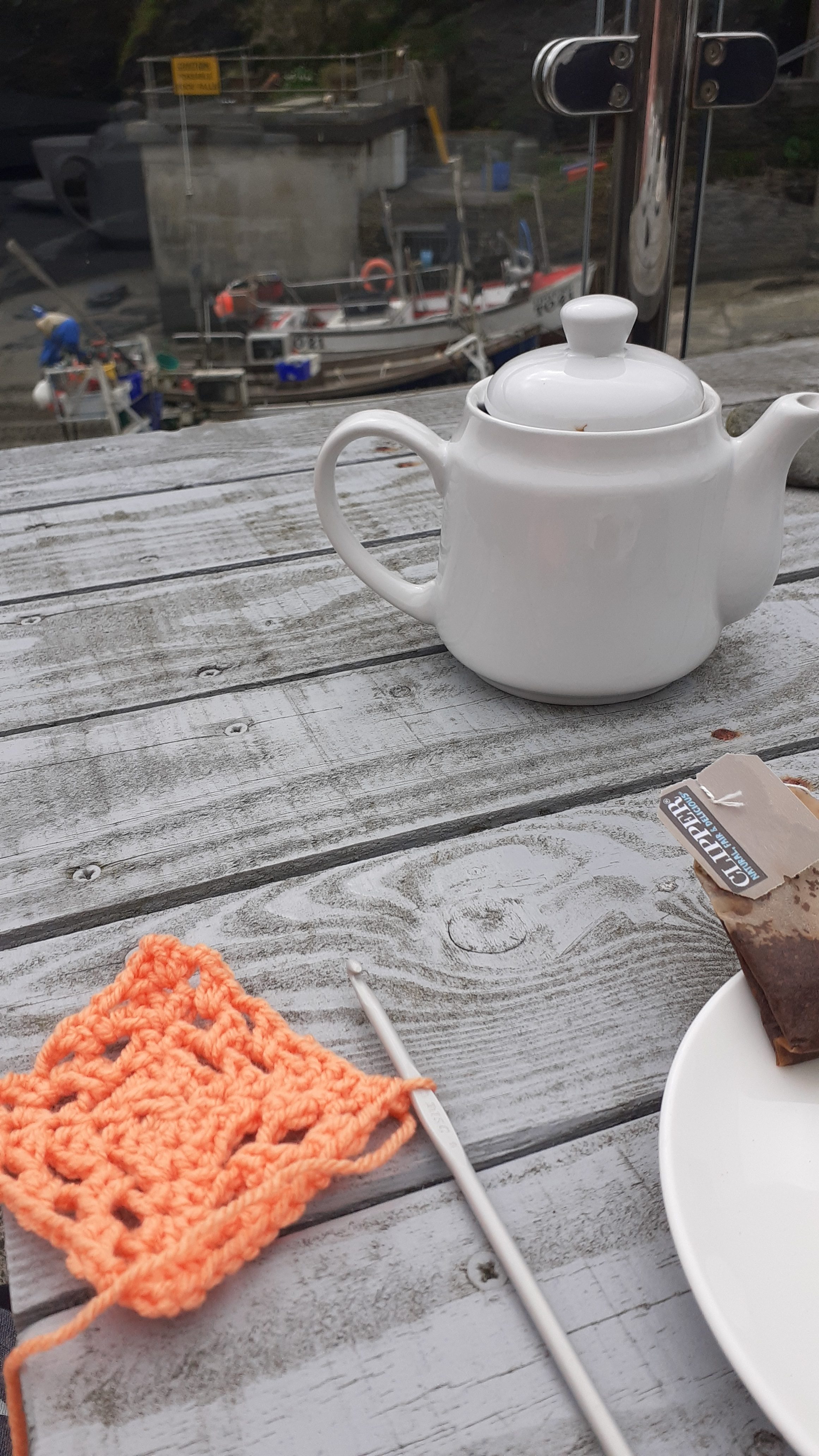
Isobel crafting around the countryside with her grab and go bag
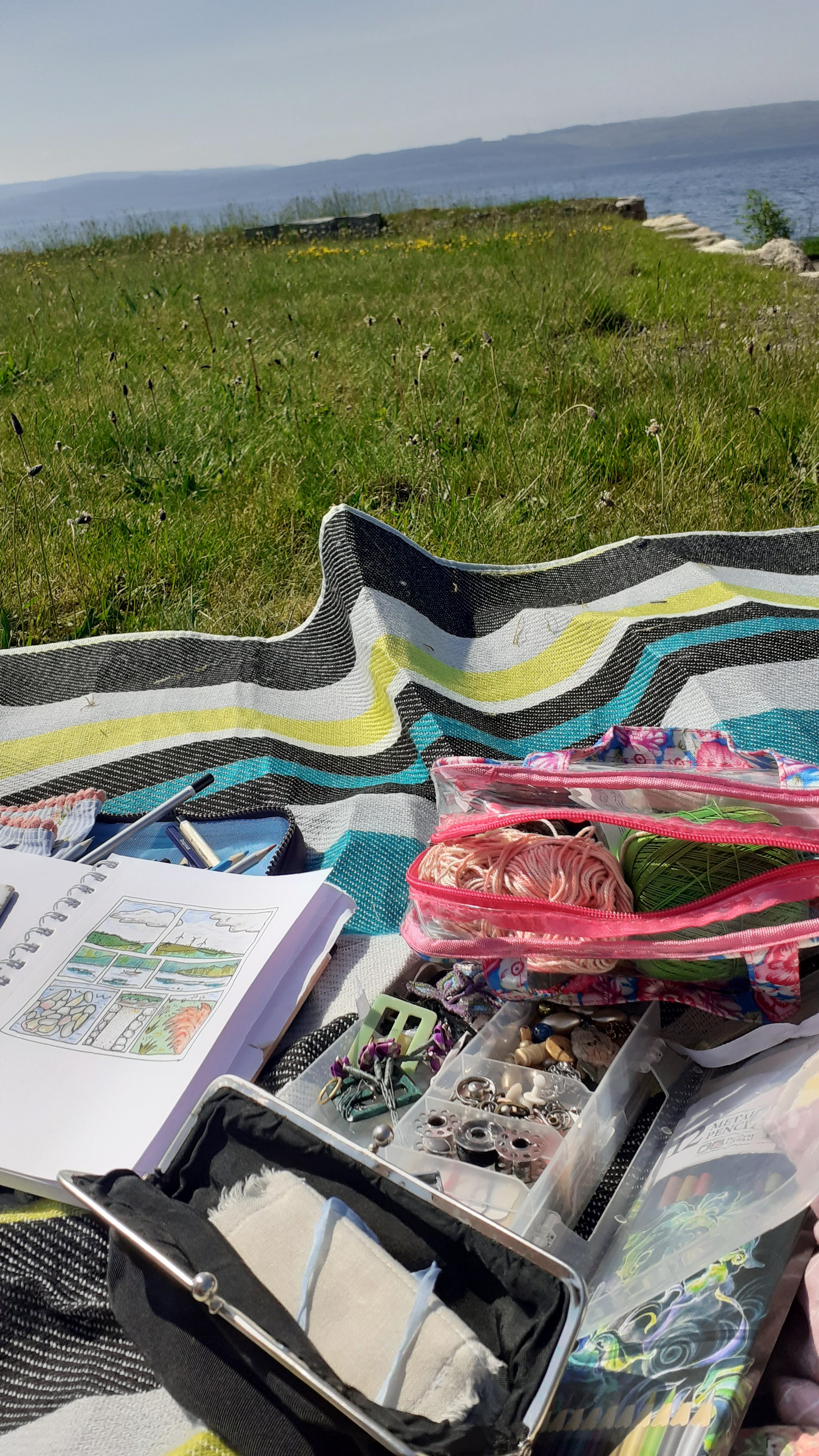
Future Plans and the Joy of Giving
“I’m making so many things, and friends can only have so many,” she laughs. “I plan to set up a craft stall and sell items, with all the money going to the local hospice that has been amazingly supportive to my family. But I don’t want the obligation to make certain things. For me, it’s the process not the end product.”
Lessons Learned and Advice for Younger Generations
“When I was younger, I didn’t think about it, I just did it. Now, I see the connection between my health and crafting. I didn’t often use creativity at work, always the planner and finisher, not the creative type. But crafting has shown me that enjoying a hobby isn’t about obsessing over it. It’s about learning about myself, physically and mentally.”
"Crafting has taught me not to worry about finishing anything in one day. Enjoy what you’re doing."
The Impact of Hobbies on Well-being
“I think there’s a lot to do with labels. No one did crafting when I was younger. It wasn’t the done thing. Now, it’s about finding what interests you and brings joy. As I started to feel better and was no longer working, I made notes about what I wanted to do: nice things with people I like. Crafting has taught me not to worry about finishing anything in one day. Enjoy what you’re doing.”
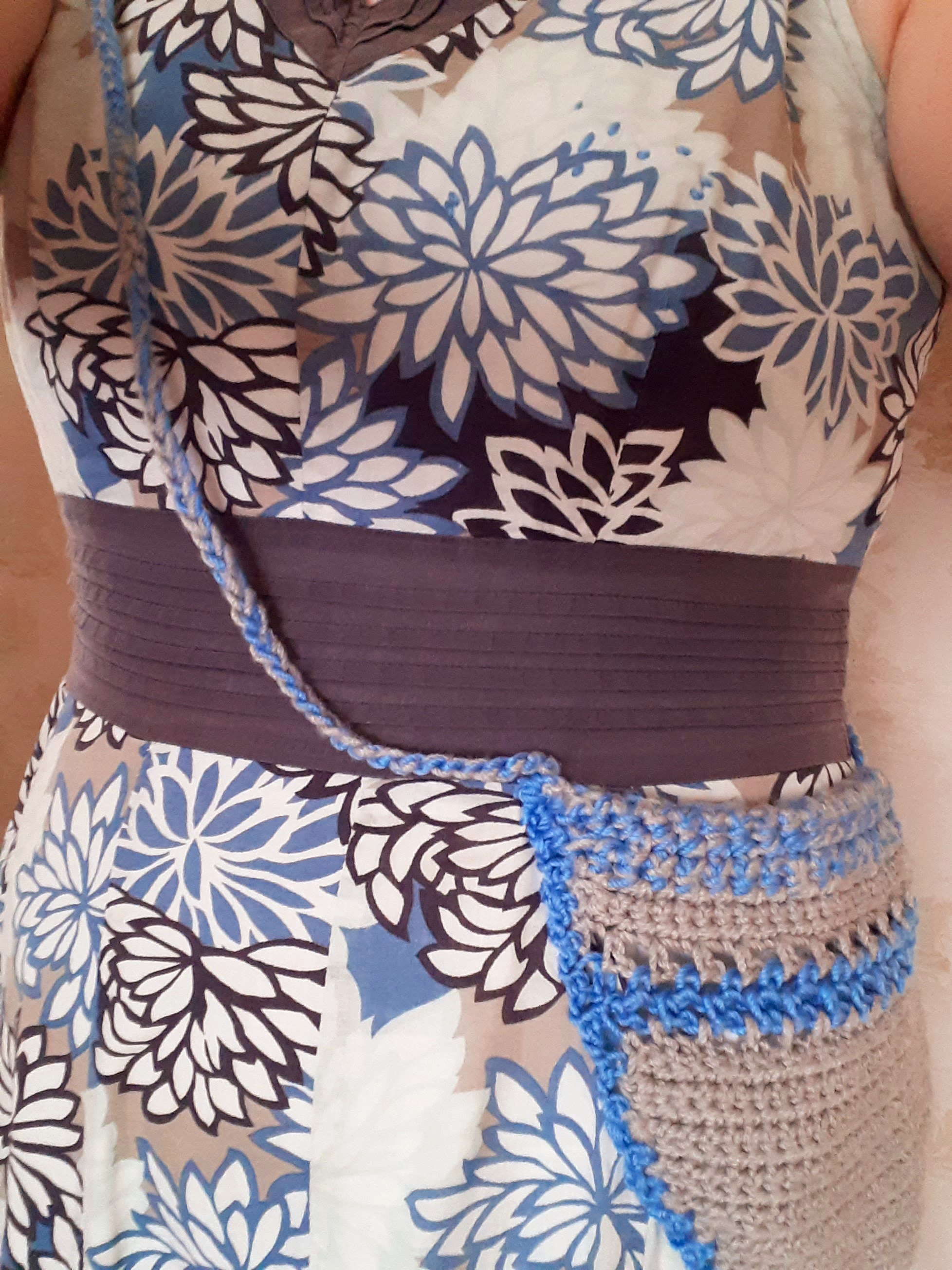
Isobel's knitted pocket
What Would You Say to Your Younger Self?
“Just enjoy what you enjoy and don’t worry if the crochet blanket you made is a passion killer or not,” she laughs. “It’s about confidence and not worrying about what people think. It is like the knitted pockets I make which can be added to any outfit. I might look a bit odd, but so many people come up to me and say they want one of those pockets! As a teenager, I was self-conscious, but now I’d say if you enjoy it, just do it!”
Isobel’s journey illustrates how returning to childhood hobbies can be a source of healing, creativity, and joy. In a fast-paced world, these simple pleasures remind us to slow down and savor the process of creation. Whether through knitting, painting, or any other childhood hobby, doing what we love can enrich our lives in unexpected and beautiful ways.

 &
& 
